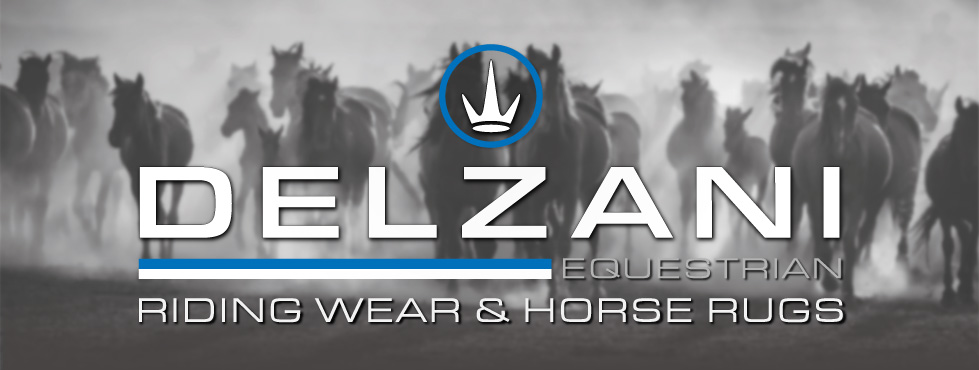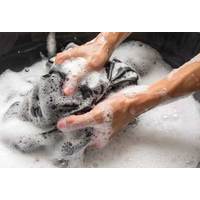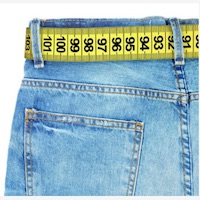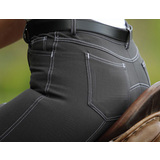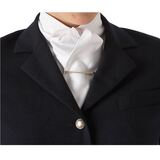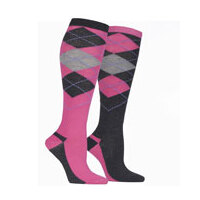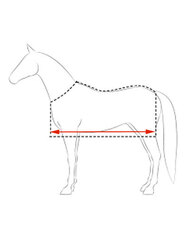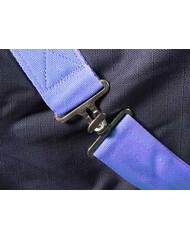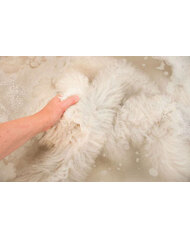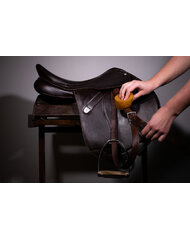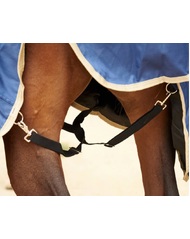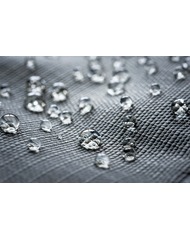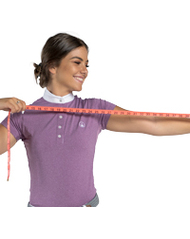Riding Shirts - Washing & Care Guide

How to Wash and Care for Equestrian Riding Shirts the Right Way
Updated October 2025
A practical guide for Australian riders on preserving fit, colour, and performance in technical riding shirts through correct washing, drying, and care habits.
Quick Guide: Essential Rules
- Cold water only. Hot water damages spandex and elastane fibres, leading to loss of stretch and premature pilling.
- Turn shirts inside out. This protects zips, snap hooks, and buttons from snagging and reduces lint build-up. For premium fabrics, use a delicate wash bag for extra protection.
- Wash light colours separately. Eco-conscious performance fabrics absorb colour easily from darker items that bleed in the wash.
- Air dry, never tumble dry. Heat breaks down fibre elasticity. Hang shirts inside out and out of direct sunlight to maintain colour and softness.
Preparation
- Never leave dirty white competition shirts sitting unwashed. Sweat and oils oxidise, causing yellowing around the collar band.
- Unbutton all closures - including cuffs and collars - before washing. This prevents stress on seams and buttonholes.
- Always turn shirts inside out to protect the fabric’s smooth exterior and maintain colour vibrancy.
- Check each garment’s care label before washing to confirm temperature and detergent compatibility.
- Spot-clean stains with a mild detergent before washing. For sweat marks on white collars, use a pre-wash stain remover.
- For delicate technical fabrics, use a mesh washing bag to prevent tangling and snagging.
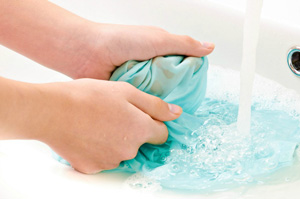
Choosing the Right Wash Cycle
- Use the Delicate or Sportswear cycle to minimise friction and protect fine fibres.
- Wash whites and light colours in warm water (up to 40°C). For dark shirts, use cold water only to prevent fading.
- Avoid chlorine-based detergents - they cause discolouration and fibre breakdown. Choose a high-quality, mild detergent suitable for technical fabrics.
- Front-load washing machines are gentler on fabric than top-loaders. Use a short spin to remove excess water without stretching seams.
Drying
- Air drying is always best. Avoid dryers - high heat weakens elastane and shortens garment life.
- Remove shirts promptly after the cycle ends to prevent deep wrinkles from setting.
- Hang shirts on wide hangers to maintain their shape. Turn them inside out if drying in sunlight to reduce fading.
- For crisp collars, iron lightly while slightly damp — it helps preserve structure without scorching fibres.
Storage
Whether you fold or hang your shirts depends on your space and preference. Hanging reduces wrinkles and preserves shape - just ensure your hangers are broad and supportive. Folding, however, can help prevent long-term stretching, especially for lighter fabrics. Whichever you choose, always store shirts clean and dry to prevent odours or mildew.
Can I Use a Clothes Dryer?
We recommend avoiding dryers entirely and air drying on a hanger instead. If a dryer is unavoidable, use the lowest heat setting and remove shirts while slightly damp. Iron immediately to release wrinkles and finish drying. Over-drying will make shirts harder to iron and can permanently alter their stretch and fit.
How to Prevent Sweat Stains
Sweat stains, particularly under the arms, are common in technical training shirts. The key is to avoid deodorants containing aluminium - the chemical reaction between aluminium and sweat causes yellow staining. Choose aluminium-free deodorants or antiperspirants to keep white fabrics clear and fresh.
How to Remove Stains from White Shirts or Collars
Accidents happen, but quick action matters. Blot stains immediately with cold water or a fabric-safe stain remover. If unavailable, use a drop of dishwashing detergent, lemon juice, or vinegar. Dab gently - never rub - as friction can drive the stain deeper into the fibres.
Should I Use Starch?
While starch can create a crisp finish, it also shortens the lifespan of your shirts. Once embedded in fibres, starch particles act abrasively, breaking them down over time. For longevity and softness, skip the starch and rely on a proper press and cool iron instead.
Written by Jane Griffiths - an experienced Australian horse owner and product developer with over three decades immersed in equestrian life. Jane has spent years refining horse rugs, tack, and riding apparel to better suit Australian climates. She has enjoyed countless weekends at gymkhanas, show jumping events, and pony club competitions with her daughter, and still loves hitting the trails with friends whenever she can. Her lifelong passion for horses and hands-on understanding of equine comfort continue to shape her practical, rider-first approach to horse care and product design.
Leave a comment
Related Equestrian Guides
Equestrian Breeches & Tights - Washing Guide
Care for your breeches the way you care for your horse — with precision, patience, and pride. The right wash routine keeps your Delzani riding tights and breeches performing beautifully, ride after ride.
Delzani Riding Breeches & Tights Size Guide
A guide to seat grips on our Breeches & Tights
It is interesting to learn how silicone is applied to breeches. Silicone is applied much like screen printing and there can be anywhere from 3 to 10 layers - building up the silicone. The number of layers affects the long-term quality.
The Ultimate Guide to Equestrian Breeches & Jodhpurs: Classic Fit vs Stretch Fit Explained
At Delzani - we pride ourselves on the careful in house selection and development of our premium breech and tights fabric blends. Each fabric has been researched and custom made to meet our requirements and the needs of Australian equestrian riders.
Dress for Success - Dressage Dress Code
Want to look your best at your next Dressage Event but not sure what the rules are? Understanding exactly what is and isn’t permitted in regard to dress standards for dressage riders can be very helpful when putting your competition wardrobe together.
Dress for Success - Showjumping Dress Code
Understanding exactly what is and isn’t permitted in regard to dress standards for Showjumping competitors can be very helpful when putting your competition wardrobe together.
How to tie a Dressage Stock tie
Need help with your Dressage Stock Tie? Try our easy 6 steps to have you knotting a perfect Dressage Stock in no time!
Choosing the perfect horse riding sock
Learn what makes the best horse riding socks for Australian riders. From fabrics to fit, cushioning and durability, this guide explains how Delzani riding socks outperform everyday socks in comfort and performance.
Delzani Horse Rug Sizing Guide
We have put together this comprehensive guide to help you purchase the ideal size Delzani horse rug.
How to fit & adjust horse rug belly surcingles
Belly surcingles keep horse rugs secure, but only if fitted correctly. We answer common questions on what surcingles do, why they matter, and how proper adjustment ensures comfort, safety, and longer rug life for horses in Australian conditions.
Wash Guide - Horse Rugs
To get the best life from your Delzani horse rug, taking a few simple washing precautions will go along way.
Wash Guide - Sheepskin
Follow our care guide to get the the best advice on washing your sheepskin numnahs and saddle pads.
How to maintain your saddlery leather
Cleaning tack is admittedly not something we like to spend our spare time engaged in, but it is necessary nonetheless and a little knowledge can go along way to get the best life from your leather.
Understanding your horse rugs waterproofing
Learn how horse rug waterproofing and breathability really work, why membranes matter more than fabric, and how to test, care for, and choose rainsheets. Explore Delzani’s 600D Waratah and 1200D Wyndham rugs, built for tough Australian conditions.

